|
|
|
Editor's note
|
|
The six Apollo missions that landed humans on the moon brought new kinds of shadows to the lunar surface - those cast by objects left behind, like rovers, cameras and other equipment. In an edited extract from her new book, Alice Gorman writes about how the modern prospect of lunar mining means the moon, and the way we as humans think about it, could be even further changed.
Elsewhere, read the story of how tin changed humanity, and learn about Wanji-wanji, an Indigenous song with lyrics that have remained unchanged by distance or time. Meet some of the women profiled in our Hidden women series, surfing pioneer Isabel Letham and Mrs Fanny Finch, Australia’s first known female voter. And enjoy your Sunday.
|
Rosanna Hunt
Deputy Editor: Arts + Culture
|

|
|
Shadows on the moon
|
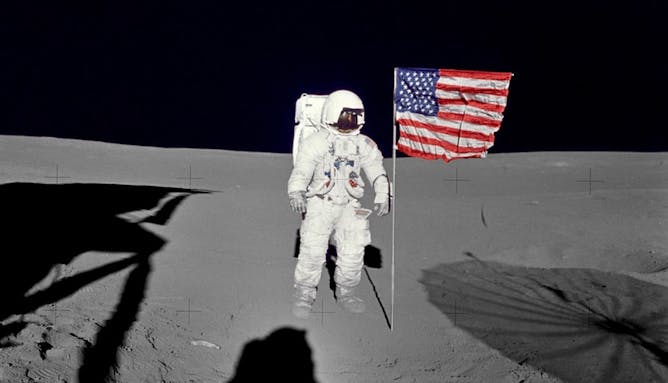
A large, sea jelly-like antenna shadow from the Apollo 14 mission in 1971.
NASA
Alice Gorman, Flinders University
This year the Apollo 11 mission turns 50 - but what does the future hold for the Moon? The ephemeral shadows cast by human artefacts may soon be joined by more permanent scars of lunar mining.
|
More Friday essays
|

Cherine Fahd, University of Technology Sydney
Rarely seen in the family album are photographs of funerals, burials and the suffering of those who are left to mourn.
| |
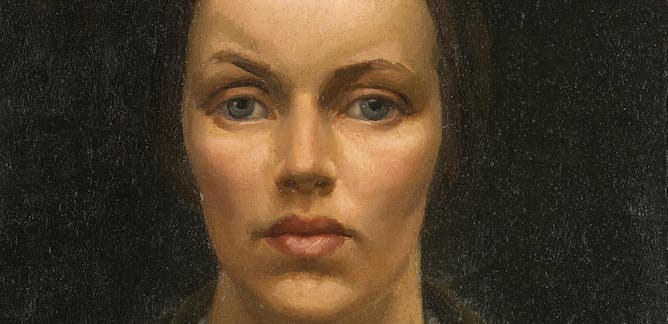
Joanna Mendelssohn, UNSW
Nora Heysen was the first woman to be awarded the Archibald Prize, but for most of her life she was defined not by her art, but by her relationship to her famous father, the artist Hans Heysen.
|
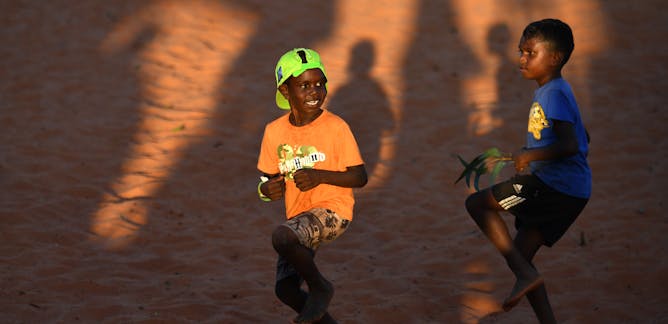
Stephen Muecke, University of Adelaide
It's time for a more reasonable, hybrid definition of civilisation that incorporates our Indigenous heritage.
| |
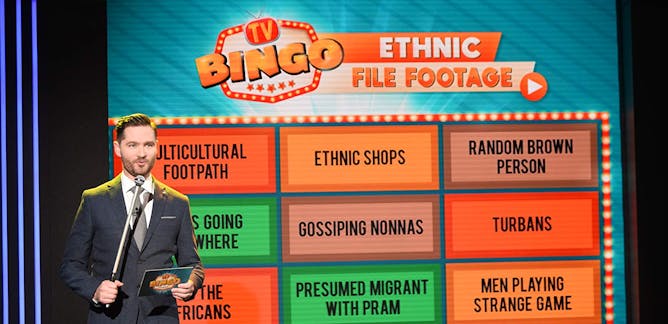
Alex Cothren, Flinders University; Robert Phiddian, Flinders University
Today's screen satire frequently preaches to the converted. Fortunately, there are some notable exceptions that can skewer even the most progressive of viewers.
|
|
|
More than tin cans
|

Tin comes from the ore cassiterite.
Shutterstock/PYP
Michael Cortie, University of Technology Sydney
On its own it's just tin. But mix it with other elements and it turns into a material that helped shape the ancient world.
|
More science long reads
|
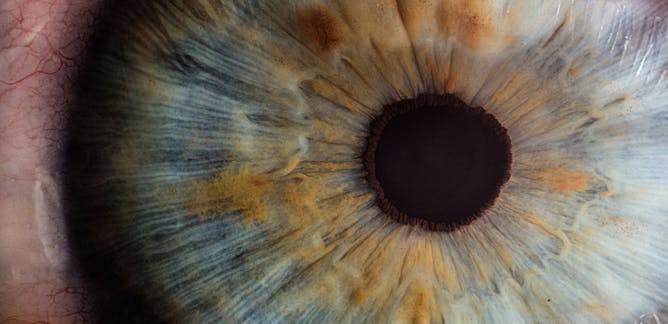
Andrea Rassell, RMIT University
Sometimes photographic images are not able to capture and accurately represent science – especially at very tiny scales. This is where scientific visualisation comes in.
| |
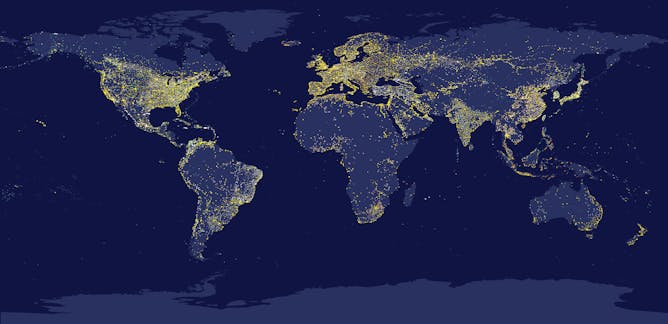
Tom Sear, UNSW
Nation states are covertly working against each other on the very same digital platforms they use to collaborate in areas such as trade and manufacturing.
|
|
|
Indigenous culture
|

Gurindji singers Thomas Monkey Yikapayi, Ronnie Wavehill Wirrpa and Topsy Dodd Ngarnjal sing ‘Wanji-wanji’.
Brenda L Croft
Myfany Turpin, University of Sydney; Brenda L Croft, Australian National University; Clint Bracknell, Edith Cowan University; Felicity Meakins, The University of Queensland
Wanji-wanji's lyrics have remained unchanged over thousands of kilometres and the past 150 years.
|
History's hidden women
|
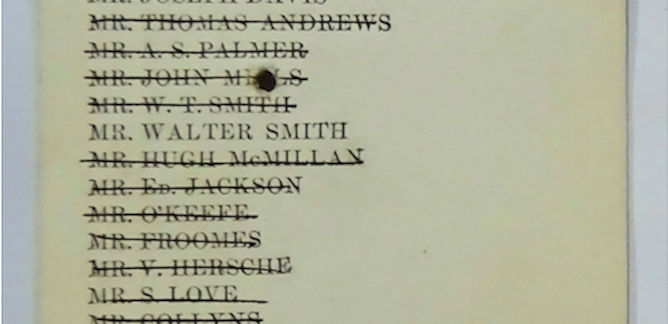
Kacey Sinclair, La Trobe University
Decades before most white Australian women were granted the right to vote, a businesswoman and single mother of four took to the polls and signed a ballot paper.
| |
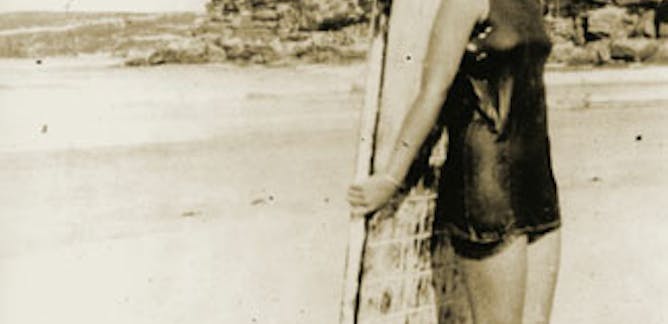
Anne Rees, La Trobe University
Isabel Letham was one of the first Australians to ride the waves. After moving to the US in 1918, she became an epitome of the modern woman: economically independent, physically daring and unapologetically ambitious.
|
|
|
Guide to a classic
|
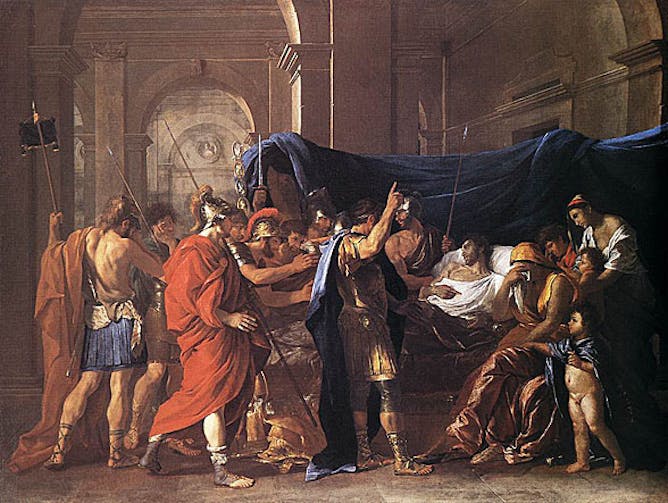
The death of popular prince Germanicus painted by Nicolas Poussin in 1627.
Senex Magister/flickr
Caillan Davenport, Macquarie University
Tacitus' Annals is a powerful and darkly humorous examination of imperial Rome. Though his work was little read in the Roman world, it has influenced great thinkers such as Hobbes and Montesquieu.
|
| |
Featured jobs
|

|
University of Tasmania — Rozelle, New South Wales
|

|
RMIT University — Melbourne, Victoria
|

|
University of Melbourne — Parkville, Victoria
|

|
Monash University — Caulfield East, Victoria
|
|
|
|
| |
| |
| |

|
| |
| |
| |
Featured events
|

|
The University of Sydney, Sydney, New South Wales, 2006, Australia — University of Sydney
|

|
The University of Sydney, Sydney, New South Wales, 2006, Australia — University of Sydney
|

|
The University of Sydney, Sydney, New South Wales, 2006, Australia — University of Sydney
|

|
Curtin St Georges Terrace, 137 St Georges Terrace, Perth, Western Australia, 6000, Australia — Curtin University
|
|
|
|
| |
| |
| |
| |
| |
|
|
|
|
|
|
|